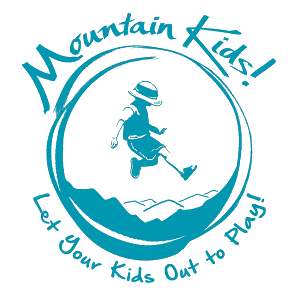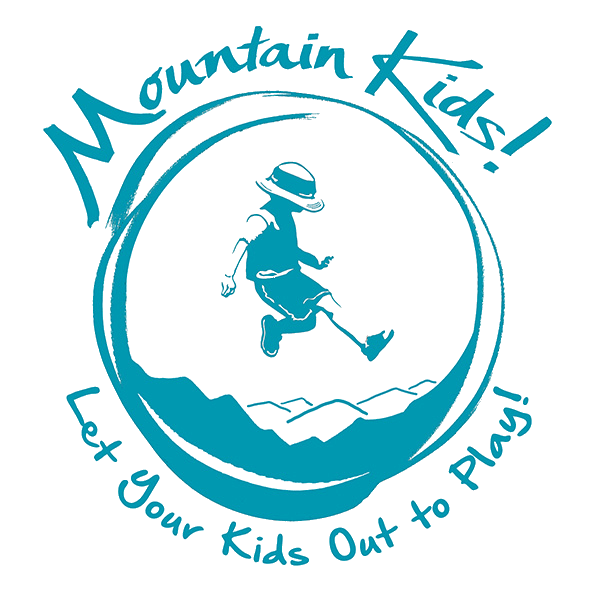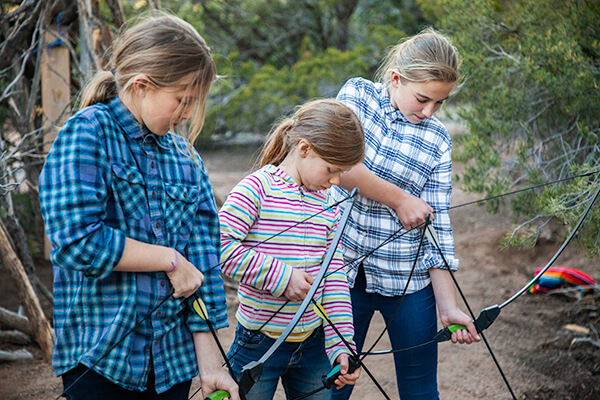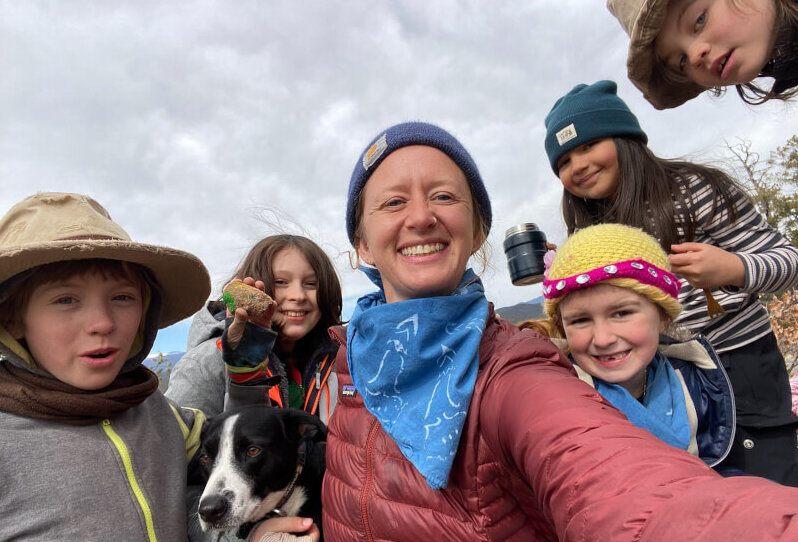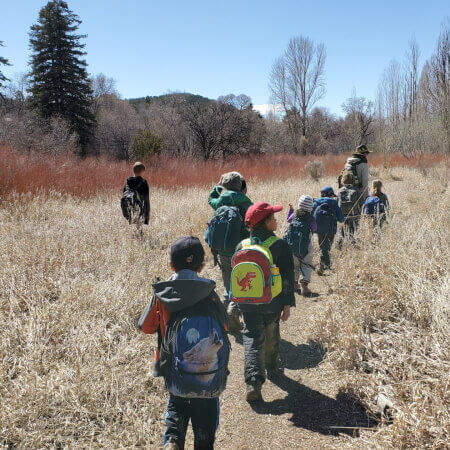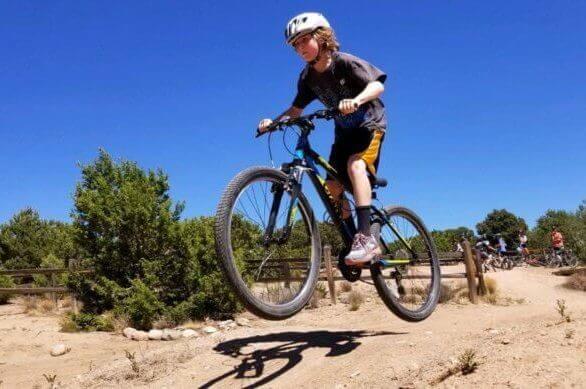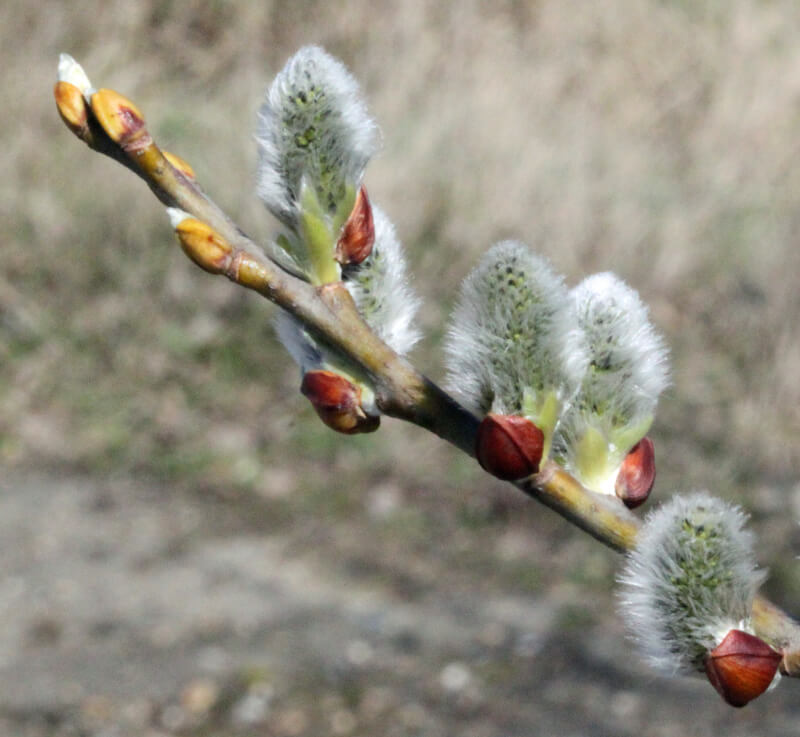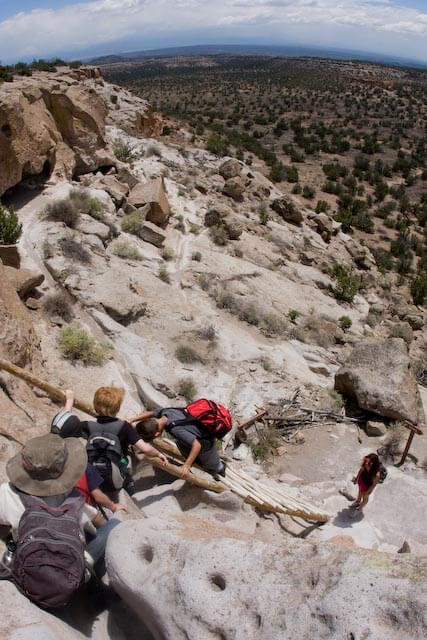Monday morning greeted the Mountain Kids with the chance to harvest apples at the beaver ponds, which of course included some tree climbing for those who felt called to do so!

The Eagles were very successful in the apple hunt, picking more than 200 apples in a short amount of time! They did most of the coring and slicing of apples to make apple sauce for everyone to take home. (The Hummers would have their turn on Thursday with the peaches!)

On Tuesday morning we sliced and strung apples to dry them for a lovely dried fruit snack.
The remainder of the day was spent hiking at Tsankawi,
part of Bandelier National Monument. The children learned about how the Ancestral Pueblo people once lived. While enjoying lunch in a wonderfully cool cave dwelling. Mountain Kids learned of the many different types of food and animals in the local area and the ways in which the Native peoples would have gone about harvesting and hunting them for food.

On Wednesday, we headed out to Rio en Medio, where we were able to gather fallen acorns and experience the sweet taste of freshly plucked red currant berries and a few raspberries along the trail.

The heat of the afternoon was spent splashing about the crisp river water, creating dams and building boats from nature to sail down the river. On our travels back to Santa Fe, the Mountain Kids spotted a couple of beautiful fruit trees full of apricots and apples, which they harvested for a juicy afternoon snack! Foraging sure is fun, and tasty. 🙂

The Eagles hiked to the Rio en Medio waterfall, crossing the river many times, an adventure in itself. It was a challenge if you wanted to keep your feet dry! We and had a blast getting wet and exploring the frigid waterfall at the end of the hike.
That afternoon the Eagles headed to Chupadero for our Cooking Adventure Campout. We roasted our dinner in the ground (Chicken, sweet potatoes, and corn), learned how to use a handdrill and bowdrill to start a fire, and pitched a large shade structure to provide respite from the hot sun.

We enjoyed time around the campfire roasting apples, apricots and telling stories. A quick rainstorm didn’t deter us from a fun evening under the stars.


Thursday morning started with an early trip to the Tesuque Pueblo, where the Hummingbirds and the Eagles joined together to pick peaches for the Pueblo people.

In return for the hard work gathering the fruit, we were able to pick our own peaches to enjoy and take home. Soon after we found our way to Chupadero where we spent the afternoon slicing peaches for a fruit compote and practicing archery.

Everyone got to take home fresh peaches that afternoon. YUM!!
With our bellies full of sweet fruit, it was nice to spend Friday playing in the woods and exploring our creative side. The Mountain Kids headed up and into the mountains where we spent the afternoon building shelters at Aspen Vista, creating hand made bows, arrows, and spears (from sticks, rocks, and yarn). It was a ‘sweet’ end to a super sweet and tasty week of foraging, eating, camping and archery! What an awesome end to an amazing summer 2019! Thank you families for being a part of it! 🙂


![]()
